#radio astronomy
Text



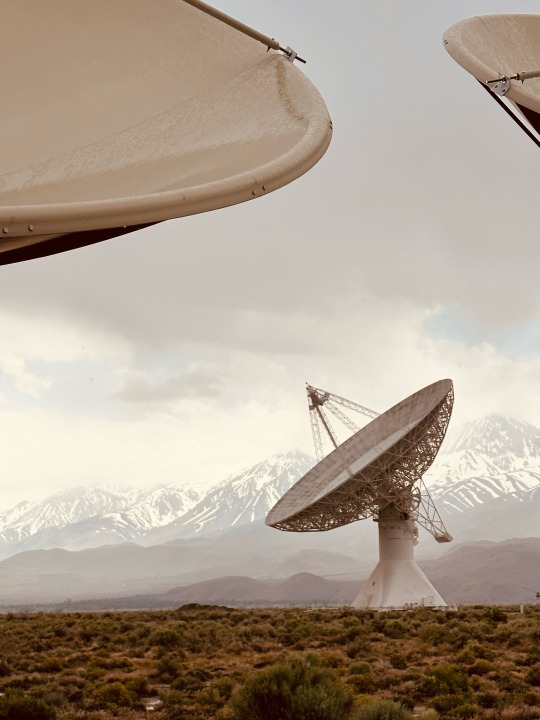
Owens Valley Radio Observatory, California
226 notes
·
View notes
Text

The radial magnetic field around NGC 4631 (Golla and Hummel 1994)
#astrophysics#astroblr#radio astronomy#interstellar medium#magnetic field#physicsblr#extragalactic astrophysics
231 notes
·
View notes
Text

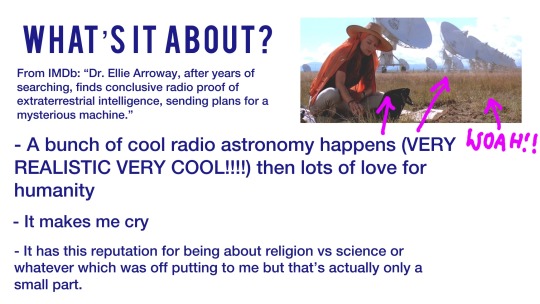







I felt I had to do my duty to promote my favourite film!!!!! It’s so so so fucking amazing. I’m ill rn so sorry this is kinda shite but GO WATCH CONTACT NOW!!!!
#technically my second favourite film but still#contact 1997#contact film#astronomy#radio astronomy#astrophysics#space#aliens#sci-fi#scifi films#scifi film recs
31 notes
·
View notes
Text
A small mission to test technology to detect radio waves from the cosmic Dark Ages over 13.4 billion years ago will blast off for the far side of the moon in 2025.
The Lunar Surface Electromagnetic Experiment-Night mission, or LuSEE-Night for short, is a small radio telescope being funded by NASA and the U.S. Department of Energy with involvement from scientists at the Lawrence Berkeley National Laboratory, the Brookhaven National Laboratory, the University of California, Berkeley and the University of Minnesota. LuSEE-Night will blast off as part of NASA's Commercial Lunar Payloads program.
The Dark Ages are the evocative name given to the period of time after the Big Bang, when the first stars and galaxies were only just beginning to form and ionize the neutral hydrogen gas that filled the universe. Little is known about this period, despite efforts by the James Webb Space Telescope to begin probing into this era.
Continue Reading.
55 notes
·
View notes
Photo
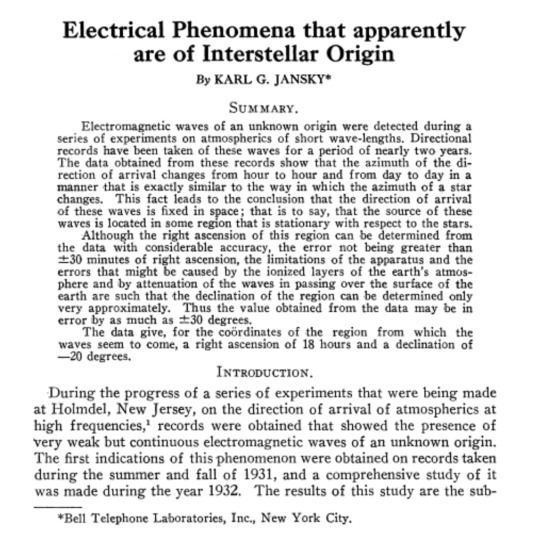
“Electrical phenomena that apparently are of interstellar origin”, the paper in which Karl Jansky announced the first detection of an interstellar radio source, which was ultimately determined to be the Milky Way’s central supermassive black hole, Sagittarius A*
78 notes
·
View notes
Text
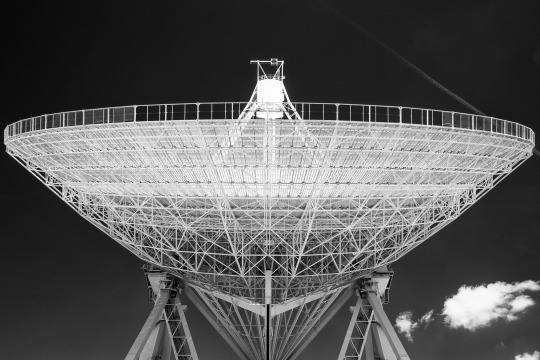
Radioteleskop Effelsberg
#Effelsberg#Eifel#radiotelescope#radio telescope#radio astronomy#astronomy#physics#infrared#infrated#infrarot#ir#astrophysics#observatory
7 notes
·
View notes
Photo
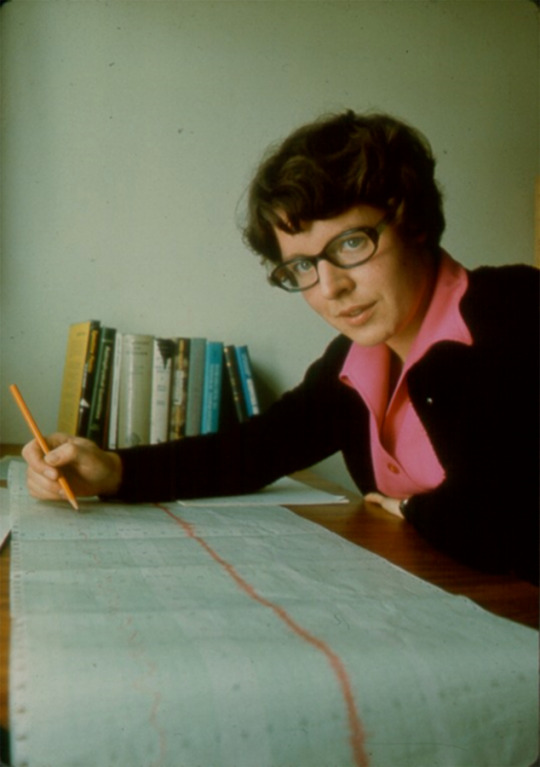
«Jocelyn Bell analyzes what would become more than five kilometers of data from the radio telescope she helped build. (Courtesy of Robin Scagell) [1974]», in Interview | Jocelyn Bell Burnell: 'Yet another call on women', Institut für Astrophysik, Fakultät für Geowissenschaften, Geographie und Astronomie, Universität Wien, May 11, 2022
#art#astronomy#radio astronomy#physics#astrophysics#photography#interview#jocelyn bell burnell#1960s#1970s#2020s
64 notes
·
View notes
Text
Bob Dawson
This documentary, directed by Bob Dawson, explores the mysterious interstellar radio signal that was detected by Ohio radio astronomers on August 15, 1977 and details the history of the search for extraterrestrial life after World War II and the development of the "Big Ear" radio telescope at Ohio State University that picked up the Wow Signal, an unusually strong, narrowband radio signal that seemed to originate from the constellation Sagittarius. It was detected by astronomer Jerry Ehman, who famously wrote "Wow!" in the margin of the computer printout, giving the signal its name. The documentary examines the ongoing debate around the Wow Signal and whether it was truly evidence of communication from an extraterrestrial civilization.
The WOW Signal (2017)
youtube
Tuesday, April 23, 2024
5 notes
·
View notes
Text
Radio astronomers have recently announced an extraordinary discovery: hundreds of long, thin structures believed to have originated from our galaxy’s supermassive black hole. These unusual formations, invisible to the naked eye, have transformed our understanding of the Milky Way and the cosmic activity at its heart.
This discovery of unusual stringlike structures has pointed astronomers towards an exciting hypothesis. Researchers posit that these might be the remnants of a violent black hole eruption from eons ago. Published on June 2 in The Astrophysical Journal Letters, the study reveals that each filament measures between 5 and 10 light-years in length, visible only in radio wavelengths.
...
Unraveling the Mysteries: The Path Forward
Despite the significant strides we’ve made in space exploration, our understanding of the universe remains limited. Unraveling the mysteries of supermassive black holes and their influence on their surrounding environments is a crucial step in our cosmic journey. The discovery of these filaments represents a leap forward in this quest, shedding light on the otherwise dark and mysterious nature of our galaxy’s core. As we delve deeper into these invisible structures at our galaxy’s center, we get closer to decoding the mysteries of the universe, one filament at a time.
7 notes
·
View notes
Photo
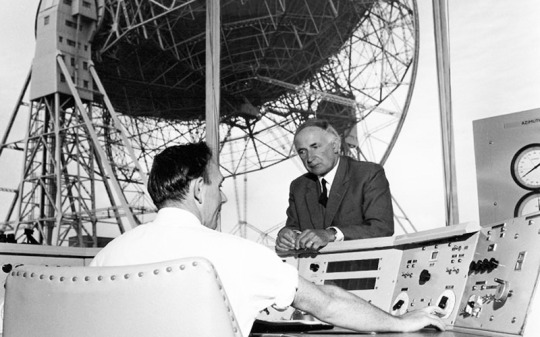
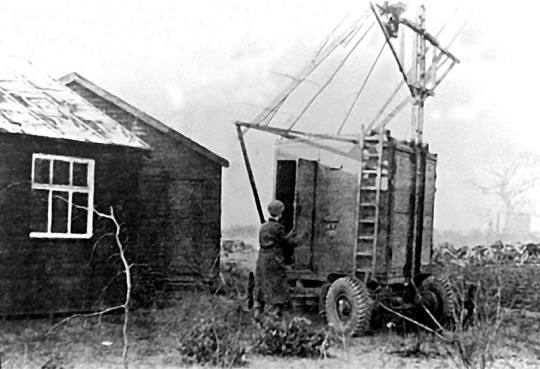


Bernard Lovell – Scientist of the Day
Bernard Lovell, an English astronomer, was born Aug. 31, 1913.
read more...
#Bernard Lovell#astronomy#radio astronomy#telescopes#histsci#histSTM#20th century#history of science#Ashworth#Scientist of the Day
28 notes
·
View notes
Photo





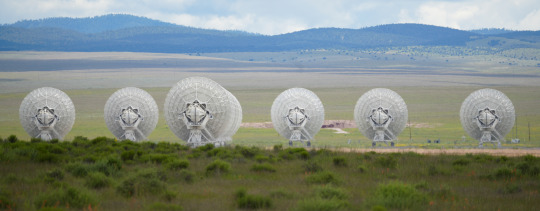
The Very Large Array radio observatory, 24 miles west of Magdalena, NM
📡⭐😍
The 28 telescopes of the VLA are moved on parallel railroad tracks and can be arranged in several Y-shaped configurations with the help of a lifting locomotive. Currently the complex is in configuration B, which spreads out the telescopes over 7 miles. The maximum separation possible is 22.6 miles.
The further apart the telescopes are spaced, the larger the array’s eye, and the more detail it can see.
Oh, and the visitor center is finally open again! :D
#space!#myr on vacation#very large array#nrao#radio astronomy#my pics#first four are from last week#fifth is from 2021#sixth is from 2022 and shows the telescopes in their closest configuration#anyway#i just think absurdly large telescopes are neat
7 notes
·
View notes
Text
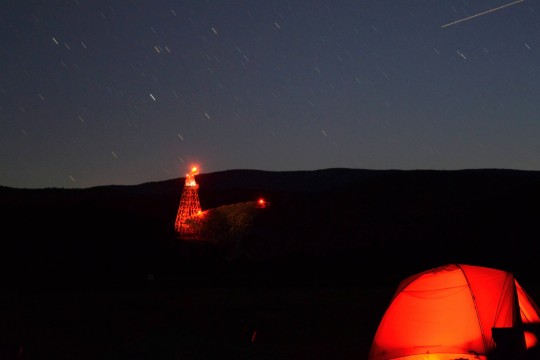
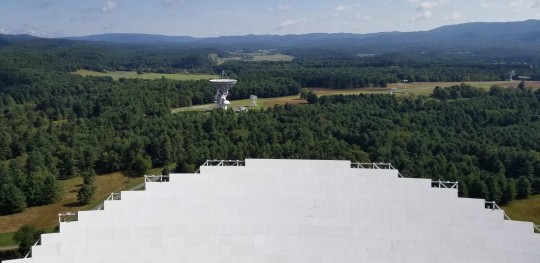

3 notes
·
View notes
Text

Photo of Uranus taken by James Webb NASA, ESA, CSA, STScI. Procesamiento de imágenes: J. DePasquale (STScI) 6 of february 2023
#astronomy#james webb telescope#space#stars#planets#uranus#jupiter#astrophysics#photography#blue#physics#radio astronomy
6 notes
·
View notes
Link
After 30 years of planning and negotiations, construction begins this week on the Square Kilometre Array (SKA), the world’s largest radio-astronomy observatory. The giant instrument—to be built across sprawling sites in Australia and Africa—will collect the radio signals emitted by celestial objects and will hopefully shed light on some of the most enigmatic problems in astronomy, such as the nature of dark matter and how galaxies form.
On Monday, astronomers and local communities will travel to the remote sites in South Africa’s Northern Cape and Western Australia to celebrate the milestone with officials from the SKA Observatory (SKAO), the intergovernmental organization in charge of the telescopes.
“We’re basically setting the foundation of this instrument for the next 50 years,” says Lindsay Magnus, the director of the telescope being built in South Africa, who is based in Cape Town, South Africa. “That’s the exciting part—this is a long-term legacy.”
Continue Reading.
#Science#Astronomy#Square Kilometre Array#radio telescope#Space#Australia#Africa#South Africa#radio astronomy#stem
132 notes
·
View notes
Text
The Arecibo Observatory has put out its last newsletter.
As you are likely aware, the Arecibo Observatory ceased science operations on August 14, 2023. The facility is expected to transition to the Arecibo Center for STEM Education and Research (ASCER) in the future.
This will be the final newsletter shared with the Arecibo science community produced under the management by the University of Central Florida.
We hope that the content of these newsletters has been as informative, educational, and inspiring as the AO research and education programs that the newsletters were designed to highlight.
Why has this powerful scientific tool been allowed to fall into disrepair, and abandoned? We will not say that it is “indispensible and irreplaceable”, but we have a very difficult time envisioning what could replace it, other than facilities on the surface of Luna (preferably the far side), or the giant orbiting dish of Project Cyclops ― which, we should emphasize, not only do not yet exist, but are not yet being seriously contemplated, planned, and prepared for by world space and scientific research bodies.
2 notes
·
View notes
Text
Allow me to share with you, unprompted, the greatest photo I have ever taken:
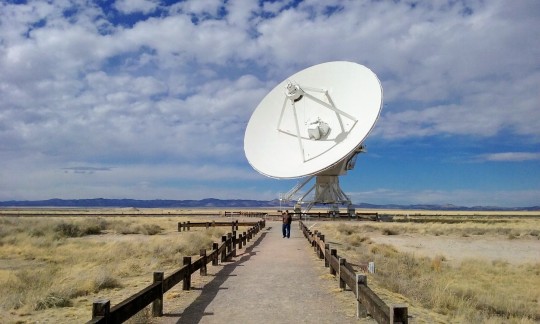
I took this photo at the Very Large Array (a radio astronomy observatory in New Mexico) on a shitty low end android phone from 2013.
That's my dad in the middle of the path. He's about halfway between me and the dish. To give you a sense of how massive these things are, my dad is about 6' 2".
They have about 28 of these on site. The size and number of them is staggering in person. Truly an unforgettable experience.
I absolutely recommend going out of your way to visit the VLA if you're in the area.
Word of advice, though: bring warm clothing and something to cover your face with. It's at a very high altitude in the middle of a flat desert, so the cold wind will eat through a t-shirt like it's tissue paper (and knock you on your ass if you're not careful). I was wearing a couple layers, but even that wasn't enough. You Have Been Warned.
5 notes
·
View notes